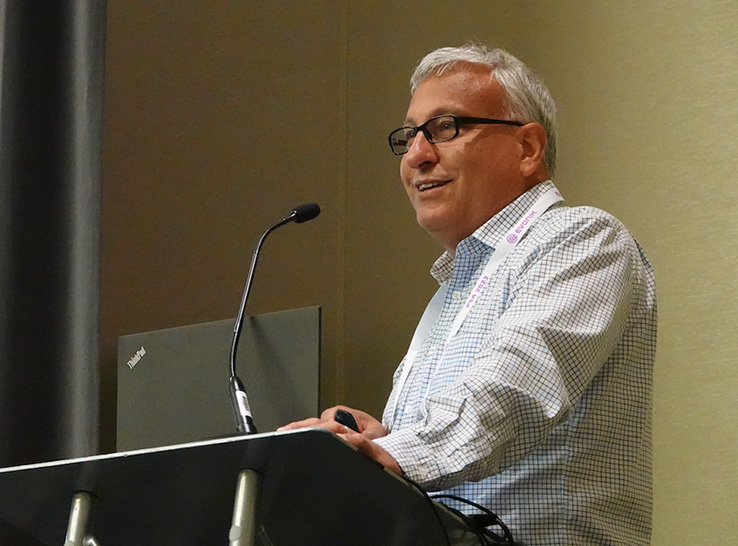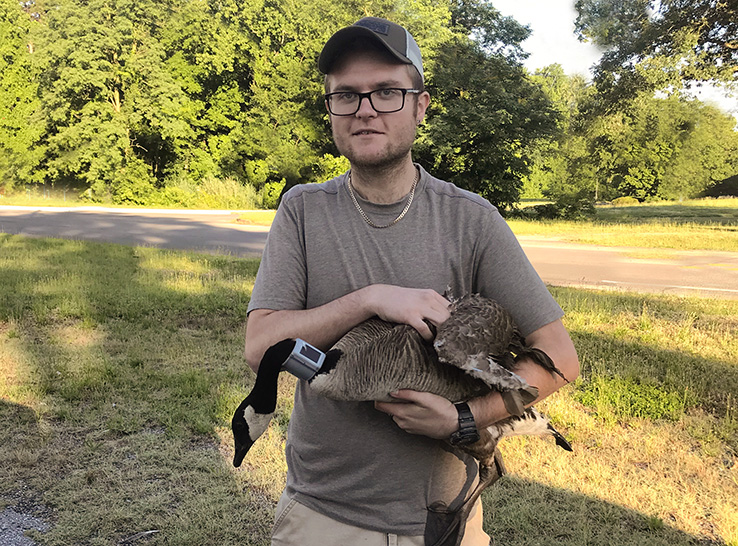Reality is sinking in. Highly pathogenic avian influenza (HPAI) in the US is likely here to stay, and vaccination may be an option for long-term control, reported David Suarez, DVM, PhD, US National Poultry Research Center.
“We’re seeing the virus become more widespread and infect more species than we saw in 2014-15,” he said. “This virus continues to change, and that’s been the constant theme.”
Speaking at the 2023 Poultry Science Association’s annual meeting, Suarez discussed how the recent HPAI outbreak expanded from 21 to 49 states. The virus also found its way into Mexico and South America, becoming the fifth continent with HPAI. [Editor’s note: On Thursday, Oct. 5, USDA reported that HPAI was confirmed in a South Dakota turkey flock.]
“Now the big question is if HPAI is going to become endemic in our US wild-bird population,” Suarez said. “If we look at Europe as an example, it probably will. So, this may be a problem we have to deal with for a long time.”
Europe’s HPAI history
“Europe has been dealing with goose Guangdong lineage H5 for 6 or 7 years in a row,” he continued, referring to variants of the HPAI virus. “They had some big outbreaks, and then [incidence] dropped off. But it started picking up, and they’ve had 3 really bad years. Now the virus is widespread among poultry in Europe.
“I think we’re a little bit later than Europe. The pattern is the virus persists in the wild-bird population and continues to infect poultry…and we’re likely going to follow this pattern as well.”
US wild-bird infections ballooned from 98 in the 2014-15 outbreak to 7,144 wild birds in the latest outbreak. Other species like gulls and terns were among the high number of wild birds killed.
The 2022-23 outbreak also involved more poultry than the earlier outbreak — 58.8 million birds compared to 50.4 million birds — making it the largest animal-disease outbreak to ever occur in the US.
The good news is that sequencing shows 85% of the outbreaks in US poultry were direct introductions from wild birds and not farm-to-farm spread.
“We’re doing a better job of getting it off the farm,” Suarez said. “If it does get on the farm, we’re reacting quickly and preventing it from spreading farm to farm.”
Virus more infectious
Suarez, along with colleagues Erica Spackman, DVM, PhD, and Mary Pantin-Jackwood, DVM, PhD, conducted experiments on recent outbreak viruses and compared them to the 2014-15 outbreak. They discovered the current viruses are more infectious in chickens and turkeys. They also found the virus is transmitted in turkeys more efficiently than in chickens.
“We looked at how quickly the virus infects and kills the birds,” Suarez said. “Chickens die very quickly, within 2 days of direct inoculation. Turkeys take 3 to 4 or more days, which means those birds are shedding the virus longer, increasing the opportunities to transmit the virus.”
They also learned mallard ducks are more susceptible to the recent virus with more mortality than seen in earlier cases.
“Again, the big question is if HPAI will become endemic in our wild-bird populations…and it looks likely,” he said.
Vaccination pros, cons
While vaccine use is not approved for use in the US, there are several licensed vaccines that could be considered by authorities, if needed. Suarez notes that the vaccine studies were all funded by USDA.
The products include reverse-genetics adjuvanted inactivated vaccines, herpesvirus of turkey vectored vaccines and an alphavirus vectored RNA particle vaccine. They likely require minimum two-dose vaccine protocols.
Suarez was involved in the testing and said all of them help protect against infection “The virus reduction was quite significant in all of these cases,” he added.
“So, why aren’t we vaccinating? The reason is the effect on trade. So many countries will either have a total ban or at least a partial ban if we start vaccinating. Some countries will use it as a nontariff trade barrier, and others will use it to protect their own poultry industry. And vaccines have costs.”
The best way to make vaccinations palatable for the poultry industry is to convince trade partners to accept vaccinated birds. To do that, he added, the industry will need to differentiate vaccinated birds from infected ones.
“We really need a good, inexpensive, reliable, high-throughput serologic test to allow us to test and show that the flocks are vaccinated and have not been exposed to virus or infected with virus,” he said.
“Vaccination is probably going to occur in Europe this year [2023], and that will help move the bar forward for us. We are going to start vaccinating condors in the US because there are so few of them. While this seems like a very small step, it also will help make vaccination more palatable.”






